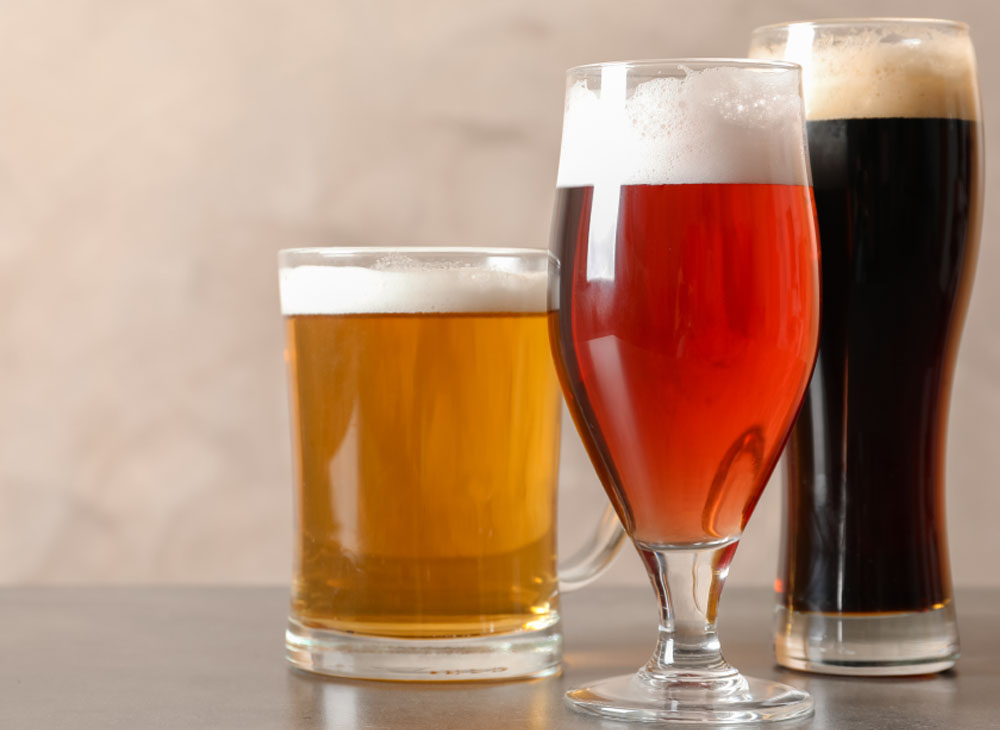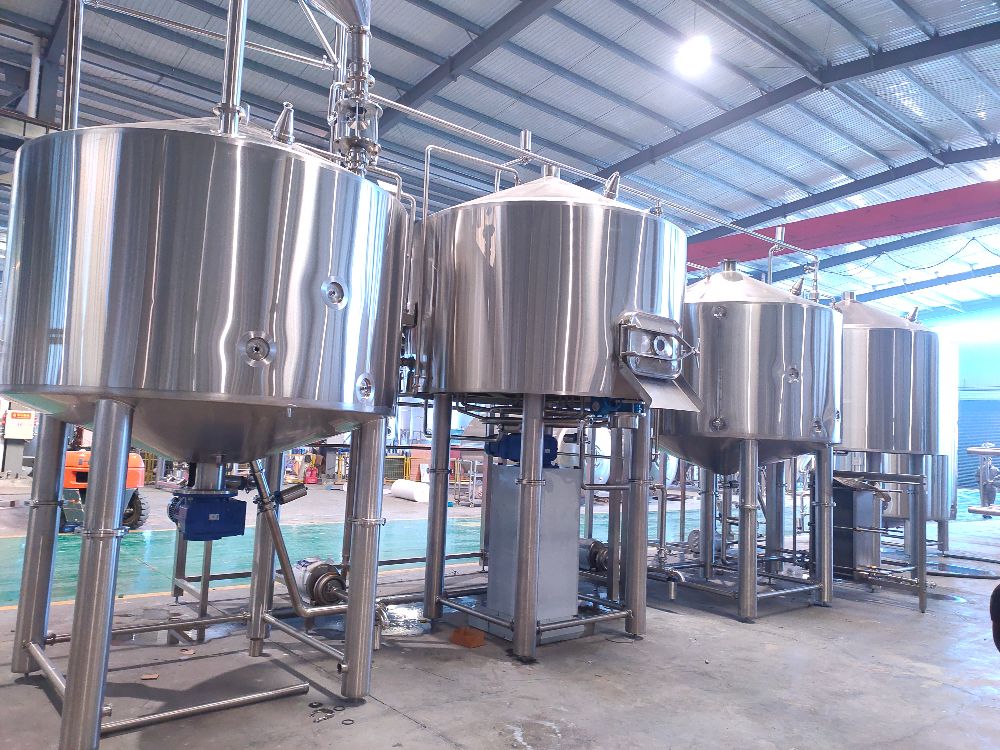How to Make Craft Beer with micro brewing system
- Sep 10, 2021
- 60
- tiantai
Step 1: Prepare
1. Gather your brewing equipment. You'll need:
Brewing Kettle
Fermenter + Air Lock
Funnel (optional)
Sanitizer
Auto-Siphon
Stir Spoon
Beer Recipe Kit (or individual ingredients)
2. Sanitize, Sanitize, Sanitize. Your success will rely on how clean your equipment is. Anything that comes in contact with your beer after the boil process should be sanitized. PBW and Star San are great cleaners and santizers.
Step 2: Brew
1. Steep Grains. Fill your 5-gallon brew kettle with 2.5 gallons of water. As you heat your water, steep your grains for 20 minutes, or until your water reaches 170 degrees. When you remove your grains, let the water drip out of the grain bag and into the kettle. Don't squeeze your grain bag as you don't want to extract tannins, which may give your beer unwanted flavors.
2. Bring kettle to a boil - Once your kettle comes to a rolling boil remove it from heat and add malt extracts. Once the extract is dissolved return to a boil. Hops will now be added at various intervals. (Note: Be careful not to boil over when hops are added.) Refer to your exact recipe as to when you need to add hops to your boil.
3. You now have wort - Otherwise known as sugar water. Cool your wort as quickly as possible. This can be done one of two ways:
Ice Bath - Simply set your pot into a sink filled with ice water.
Use a wort chiller - Insert chiller into your wort. Run cold water from your tap through the chiller and out to the sink. A wort chiller is the most effective way, but either will get you the desired results.

Step 3: Ferment
Don't forget to sanitize all your supplies! Then...
1. Pour cooled wort into the fermenter. Some brew kettles even have a valve for easy transportation from your kettle to your fermenter.
2. Add water to bring the level to 5 gallons.
3. Aerate wort by splashing it around in its container. Yeast need oxygen, and splashing your wort will help.
4. Add yeast. Dry yeast is the easiest, as you don't have to prepare it beforehand. Sanitize the yeast pack + scissors, cut the corner off the yeast pack, and pour the yeast into the fermenter.
5. Seal your fermenter, add a fermentation air lock, and store in a dark cool place. Ales should stay at 68 degrees to ferment properly.
Read more about Beer Fermentation.
Step 4: Bottling
After fermentation is complete, typically within two weeks, it's time to bottle your beer.
1. Cleanse everything: bottles, bottle filler, bottle caps, bottling bucket, and any transfer hoses used. Use a bottle brush on your bottles.
2. Boil your priming sugar in 16 oz of water. After it cools, add it directly to the bottling bucket.
3. Transfer your beer. Siphon the beer out of your fermenter and into your bottling bucket. Leave as much sediment in the fermenter as possible.
4. Fill the bottles. Attach bottle filler to hose, and hose to bottling bucket spigot. Open the bottling bucket spigot and push the bottle filler to the bottom of the bottle.
NOTE: Fill each bottle right to the top. When you remove the bottle filler, it will leave the perfect amount of space at the top of the bottle.
5. Cap the bottles with caps and a bottle capper.
6. Store the bottles at room temperature for roughly two weeks. This gives your beer time to carbonate.
Derrick
Sales Manager
[email protected]
Tiantai Beer Equipment
1. Gather your brewing equipment. You'll need:
Brewing Kettle
Fermenter + Air Lock
Funnel (optional)
Sanitizer
Auto-Siphon
Stir Spoon
Beer Recipe Kit (or individual ingredients)
2. Sanitize, Sanitize, Sanitize. Your success will rely on how clean your equipment is. Anything that comes in contact with your beer after the boil process should be sanitized. PBW and Star San are great cleaners and santizers.
Step 2: Brew
1. Steep Grains. Fill your 5-gallon brew kettle with 2.5 gallons of water. As you heat your water, steep your grains for 20 minutes, or until your water reaches 170 degrees. When you remove your grains, let the water drip out of the grain bag and into the kettle. Don't squeeze your grain bag as you don't want to extract tannins, which may give your beer unwanted flavors.
2. Bring kettle to a boil - Once your kettle comes to a rolling boil remove it from heat and add malt extracts. Once the extract is dissolved return to a boil. Hops will now be added at various intervals. (Note: Be careful not to boil over when hops are added.) Refer to your exact recipe as to when you need to add hops to your boil.
3. You now have wort - Otherwise known as sugar water. Cool your wort as quickly as possible. This can be done one of two ways:
Ice Bath - Simply set your pot into a sink filled with ice water.
Use a wort chiller - Insert chiller into your wort. Run cold water from your tap through the chiller and out to the sink. A wort chiller is the most effective way, but either will get you the desired results.

Step 3: Ferment
Don't forget to sanitize all your supplies! Then...
1. Pour cooled wort into the fermenter. Some brew kettles even have a valve for easy transportation from your kettle to your fermenter.
2. Add water to bring the level to 5 gallons.
3. Aerate wort by splashing it around in its container. Yeast need oxygen, and splashing your wort will help.
4. Add yeast. Dry yeast is the easiest, as you don't have to prepare it beforehand. Sanitize the yeast pack + scissors, cut the corner off the yeast pack, and pour the yeast into the fermenter.
5. Seal your fermenter, add a fermentation air lock, and store in a dark cool place. Ales should stay at 68 degrees to ferment properly.
Read more about Beer Fermentation.
Step 4: Bottling
After fermentation is complete, typically within two weeks, it's time to bottle your beer.
1. Cleanse everything: bottles, bottle filler, bottle caps, bottling bucket, and any transfer hoses used. Use a bottle brush on your bottles.
2. Boil your priming sugar in 16 oz of water. After it cools, add it directly to the bottling bucket.
3. Transfer your beer. Siphon the beer out of your fermenter and into your bottling bucket. Leave as much sediment in the fermenter as possible.
4. Fill the bottles. Attach bottle filler to hose, and hose to bottling bucket spigot. Open the bottling bucket spigot and push the bottle filler to the bottom of the bottle.
NOTE: Fill each bottle right to the top. When you remove the bottle filler, it will leave the perfect amount of space at the top of the bottle.
5. Cap the bottles with caps and a bottle capper.
6. Store the bottles at room temperature for roughly two weeks. This gives your beer time to carbonate.
Derrick
Sales Manager
[email protected]
Tiantai Beer Equipment



.jpg)
